Cannabis use for migraine relief has become a noticeable health trend in recent years, but many cultures have used the plant’s pain-relieving effects for thousands of years. The legalization of cannabis in over half of the U.S. states has prompted scientists to ramp up the research and testing processes.
Many research organizations are diving into exploring weed and chronic pain, including severe headaches and the occasional migraine attack. However, there is much more to be learned. If you’re thinking about trying to try medical marijuana for your migraine, continue reading as we discuss a few more things you’ll want to know.
The Science of Migraines
Headaches are a prevalent symptom among humans. Most of us have experienced a mild headache at some point; a sizeable percentage of the population is plagued by frequent and severe headaches that unfortunately disrupt their daily lives. These types of headaches are typically referred to as migraines.
A migraine is considered one of the top ten most debilitating illnesses by the World Health Organization, and it’s estimated that twelve percent of Americans, or over 37 million people in our country alone, are regularly affected by these terrible symptoms.
Women are particularly susceptible to the illness, estimating that approximately one in five women will experience migraines. Many migraine sufferers feel the debilitating impacts of their chronic pain in their social and professional lives. Unfortunately, migraine treatments are not always practical due to the unknown nature of their exact cause.
With many migraine sufferers finding no relief in prescription medications, some people have turned to medical cannabis and its ability to ease pain caused by light and sound sensitivity. Based on emerging scientific evidence, the scientific community is beginning to understand how certain cannabinoids can interfere with the pathways that trigger migraine pain, reducing their severity or even preventing the headache in some cases. This research represents a promising future for cannabis medicine and further potential treatment options for those looking for pain relief.
Why do we get headaches?
Some of the most common reasons that we get headaches are:
- dehydration
- consuming alcohol
- poor posture
- tight muscles
- stress
- eye strain (screen time)
- lack of food
- over/underuse of caffeine
- sinus congestion/allergies
- medication overuse
- high blood pressure
How cannabis can help
Although typically placed into Indica, Sativa, or Hybrid categories, we now understand that those classifications have little to do with a cannabis strain’s psychoactive properties. THC, CBD, and other minor cannabinoids play an essential role, but terpenes also work behind the scenes to help provide a particular strain’s effects.
So far, there has been limited research into terpenes and their relation to migraine headaches and the human endocannabinoid system. But one cannabis science study found that the terpenes, myrcene, and caryophyllene, help minimize migraine attacks. Discussing medicinal cannabis use with a trusted healthcare provider could help if you’ve exhausted other prescription medication options.
Can Marijuana Help Relieve Pain?
Medicinal cannabis is commonly good at reducing inflammation and producing antioxidant properties, which can help with chronic pain management reasonably quickly and even lower blood pressure.
Cannabinoid receptors bind to the brain and peripheral nerve cells within your endocannabinoid system and help to regulate the way a person sees and feels the localized pain to reduce symptoms.
Top Strains for Migraine relief
Indica-dominant strains are typically low THC and high CBD strains. They are often preferred for severe headache relief and for reducing the overall frequency of migraine.
- OG Kush
- ACDC
- Harlequin
- Blue Dream
- White Widow
Strains to Avoid for headaches
Sativa-dominant strains are typically higher in THC and strain analysis has shown that it can actually intensify migraine symptoms.
- Headband
- Super Silver Haze
- Gelato
- Purple Punch
- Sour Diesel
CBD oil
CBD oil is extracted from the hemp plant’s stems, flowers, and leaves. CBD can be extracted from marijuana plants as well. Marijuana-based CBD has not been approved at a federal level; however, it is legal under some state laws.
CBD oils can often refer to products made from marijuana plants that typically do contain high amounts of CBD at least compared to hemp plant material. CBD can be extracted from both marijuana and hemp plants. CBD is marijuana that contains higher concentrations of cannabinoids than hemp by weight, resulting in a much more potent product when using a concentrated form.
CBD oil derived from a marijuana plant can contain high levels of THC and will cause an individual to feel high. CBD oil that has higher concentrations of THC is not legal all over the country. This type of CBD is legal in areas where recreational marijuana has been legalized and in places where medical marijuana has been approved.
Types of CBD oil
CBD oil is an isolated extract of a single cannabinoid, unlike hemp oil which contains over 140 different beneficial cannabinoids and no THC or CBD. There is full-spectrum CBD oil that contains all cannabinoids, including CBD and terpenes, as well as broad-spectrum CBD which contains cannabinoids and terpenes without THC. Some broad-spectrum THC-free CBD oils are on the market. CBD isolate is pure CBD, most often marketed as the best CBD oil.
Due to the variety of full-spectrum CBD oil products on the market, it is imperative always to read product labels before use, to ensure one is aware of the potency of the oil as well as what specific cannabis compounds are in it. This is particularly important with CBD products due to the legality surrounding THC and marijuana-derived CBD products.
Also, remember that the benefits of CBD are the same regardless of if it is cannabis-derived or hemp-derived CBD products. High-quality CBD Products like royal CBD may have both a therapeutic and a slight to moderate intoxicating effect.
Is CBD oil legal?
According to the drug enforcement administration, the Farm Bill of 2018 made cannabidiol CBD legal as a controlled substance in the United States. Prescription-strength CBD oil has been medically reviewed and approved by the FDA for humans as a practical option for seizures and is often used to help patients with epilepsy. Research is ongoing to learn more about the varying ways CBD-derived products can be used as a tool for public health issues.
Hemp Seed oil
Hemp oil is a product that can come from the hemp variety of cannabis or be produced with industrial hemp. High-quality hemp extract will have very little to no THC in them and should also have other cannabinoids present such as CBG, CBN, etc. Hemp oil is extracted from the leaves and flowers of the hemp plant.
Hemp oil is not the same as hemp seed oil. Hemp seed oil is taken from Cannabis sativa plant seeds. The seeds contain no CBD; however, they are a rich source of other fatty acids, nutrients like omega-6 and omega-3 fatty acids, vitamins B and D, as well as other compounds that can have health benefits.
Hemp-derived products are cleared for use by the Food and Drug Administration and are legal to buy and sell all over the country; just always make sure to read product labels before purchasing.
Tincture Dosage
Start at a low dose (1 ml ) of your finished product, then consume the tincture sublingually. If you’re unsatisfied with the desired effects after the first use, you can exponentially increase the dose. You can also boost your dosage slowly over a few weeks to reduce discomfort and ensure safe cannabis consumption.
Edibles
Edible marijuana includes any type of CBD or THC food or drinks that you ingest, rather than smoking cannabis. You can use a tincture or cook down your buds to make edibles at home. There are also gummies, candies, brownies, and other consumption methods at dispensaries in legal states. Edibles often take longer to kick in, but they produce a relaxing body high that is useful for extreme pain and migraine headaches.
Indica
Indica is known for its strong body high and sedative effects. It is often used as medical marijuana to manage pain, anxiety, and insomnia. Indica strains are also known for their relaxed and euphoric effects, which can make them a great choice for social events.
An Indica high can feel very relaxing and euphoric. It is often described as a ‘couch-lock’ high, meaning you will likely want to stay put on the couch. Indica strains are great for winding down after a long day or for helping manage migraine pain or anxiety. Indica strains are often used for their medicinal properties, as they can help manage conditions such as chronic pain relief, anxiety, and sleep disorders.
Sativa
Sativa is one of the three main types of cannabis plants. Sativa strains are typically associated with cerebral effects, making them great for daytime use. They can help increase focus and creativity, making them ideal for performing tasks that require a lot of attention.
Cannabis sativa is historically known for its high THC content. Tetrahydrocannabinol or THC is the psychoactive compound in cannabis that gets you “high”. Sativas are well known for the so-called “head high” or “mind high” people feel after consuming or smoking them. Sativas are perceived to have uplifting effects. Sativa is often referred to as cerebral, for the strong psychoactive effects one feels.
Weed and Headaches- FAQs
Research into cannabis as an effective migraine treatment is in the early stages, and further research is needed. However, The Journal of Pain published a 2019 study claiming that the severity of headache disorders and migraines was reduced by around 50 percent when individuals participated in medicinal cannabis use.
Another medically reviewed study in Pharmacotherapy found that 40 percent of people who began medical use of cannabis as a migraine treatment experienced a significant decrease in the frequency of migraine attacks.
Anecdotal evidence published in a study by Neurology reported that 42 percent of surveyed patients saw a decrease in their migraine headache frequency.
Does Hemp oil have any adverse side effects?
Hemp oil does not produce any known severe side effects. Some people fear that it might cause a high, and others have reservations about its legality, considering that marijuana is federally illegal in the United States. It’s crucial to brush up on local laws and choose a high-quality product.
If you are on coagulants or blood thinners, you may want to remain cautious because it can significantly slow down blood clotting. Remember to discuss using over-the-counter hemp oil for migraine prevention with your primary care physician, especially when if you are scheduled for an upcoming surgery or procedure.
Can CBD make headaches worse?
CBD oil is typically helpful in reducing headaches and migraine prevention. THC is a cannabinoid that can sometimes enhance migraine attacks. An exception can be vaping CBD oil because smoking as a consumption method can irritate blood vessels, and trigger allergies and sinus issues which can cause a migraine attack.
What gets rid of a headache fast?
It truly depends on the cause of the headache, but here are a few things that can help with the pain:
- Cold Pack
- Heating Pad or Hot Compress
- Hot Shower
- Stretching and Yoga
- Go for a walk
- Eat a healthy meal
- Drink Water
- Ease scalp pressure
- Take a nap
- Dim the lights
- Make some hot tea
- Have a ginger smoothie
- Breathing exercises
- Sinus or allergy medications
- Painkillers
- CBD oil or other THC and CBD products
Is Sativa or Indica better for migraines?
According to The Journal of Headache and Pain:
“When comparing headache and migraine to non-headache groups, Indica strains were preferred in insomnia/sleep disorders group, Sativa strains in the mental health condition/PTSD group, and Hybrid strains were still preferred in the gastrointestinal disorder/Crohn’s Disease group. “
What strain is best for migraines?
OG Shark is known as the best cannabis strain for migraine symptom relief. Check out the five we mentioned above too.
What are the side effects of too many edibles?
Most of the time, taking too many edibles will result in a long nap followed by a groggy wakeup and some intense munchies. Sometimes, symptoms can be more intense like:
- Confusion
- Anxiety
- Delusions
- Hallucinations
- Panic Attack
- Nausea
- Paranoia
What are the first symptoms of edibles?
This will depend on the strain of weed used for your edibles. If you are taking a CBD oil edible, you will typically feel relaxed and pain-free without any psychoactive effects. With a THC edible, you may start to feel a bit trippy, zoned out, euphoric, happy, hungry as well as pain-free. It also can depend on your metabolism, tolerance, and what you have had to eat prior to taking the edibles.
How to full-spectrum CBD balm for acute pain
Apply the balm onto the area of focus, especially on any painful joints and muscles or migraine pressure points. If a product contains pain-relieving ingredients such as menthol or arnica, you may feel tingling, cooling, or warming sensations. We recommend that you begin with a small application of nonprescription CBD products if those sensations may irritate you.
Yoga for Migraine Sufferers
Yoga is an excellent, mild exercise that can be combined with cannabis for great yoga practice for chronic migraine sufferers. Combine this relaxing practice with a bath and hemp bombs, and you’ll be ready to curl up with a book in no time. Here are a few of the best poses known to relieve migraine pain:
- Child’s Pose
- Supine Twist
- Cat and Cow
- Seated forward fold
- Downward dog
- Legs up the Wall
- Bridge Pose
- Standing forward bend
- Corpse pose
The Takeaway
Although research into medical cannabis continues to gain momentum, there is still so much that we don’t know. Many people use weed for chronic migraine relief, and some scientists back that up as a good option.
As with any new health treatment, we recommend researching adverse effects and health benefits, discussing the change with your doctor, checking your state’s medical marijuana laws, and in the long run making the right decision for your life.

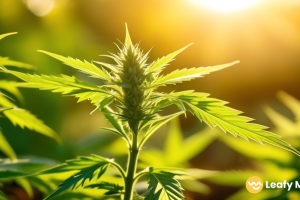
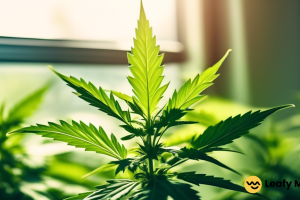
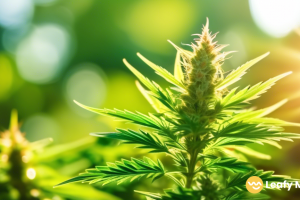




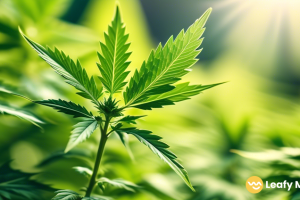
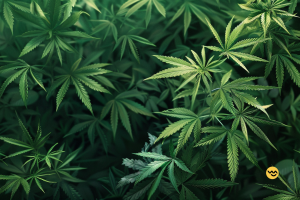
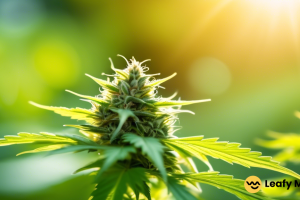
Leave a Reply